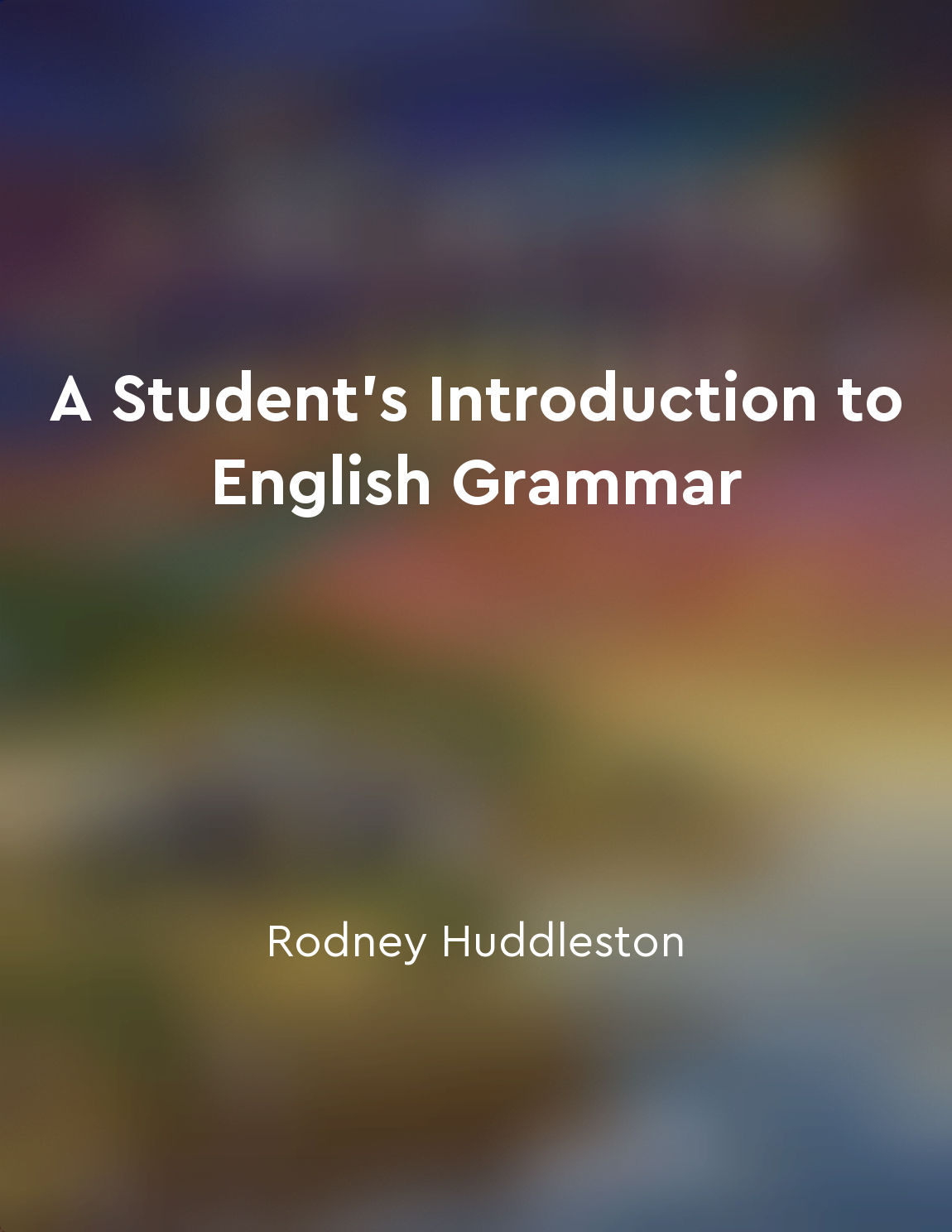Understanding verb complementation from "summary" of A Student's Introduction to English Grammar by Rodney Huddleston,Geoffrey K. Pullum
Verb complementation explains how a verb can be followed by certain words or phrases to form a meaningful sentence. In other words, it is the way of understanding how a verb is used with its objects and other words to express a complete thought.- A verb complement is any element such as an object or adverbial modifier that follows a verb and completes the meaning. Complements may refer to people, places, things, qualities or activities, and they provide extra information needed to complete the idea expressed by the verb.
- Verb complementation patterns are determined by observing how commonly used words form phrases together. Three common patterns include transitive-intransitive pairs, copular verbs, and causative links. By learning each type of pattern, one can work out which complements to use for which verb.
- It is essential to understand how verbs combine with their complements to form grammatically correct sentences. For example, some verbs cannot be used without complementation, while others require certain types of complements. It's also worth noting that verb complementation varies based on context.
- Verbs are important components of a sentence; they specify the action or state being discussed, which can be expressed in many different ways. Verbs must be complemented correctly, either by objects, adjectives, verbal nouns, prepositional phrases, and various other forms.
- Consulting specialized dictionaries and grammar books can help those who are having difficulty grasping the concept of verb complementation. Additionally, understanding English grammar rules helps individuals identify when to select a complement and how to craft it.


